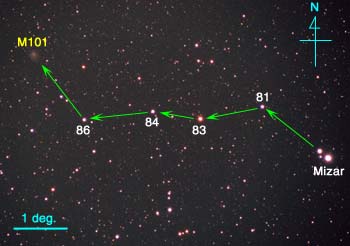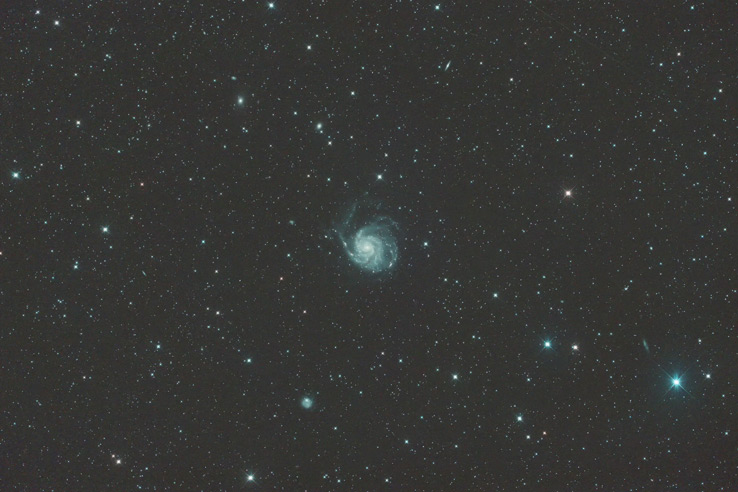| M101 (NGC5457) / Galaxy, type SAB(rs)cd I |
|---|
| R.A. | 14h 03m 12.7s (2000.0) |
|---|
| Dec. | +54° 21' 03" (2000.0) |
|---|
| Apparent Size | 28.8×26.9' |
|---|
| Radial Velocity | +360km/s |
|---|
| Magnitude | 8.3 |
|---|
| Distance | 22.5 million light yrs. |
|---|
| Group of Galaxies | M101 Group |
|---|
| Other IDs | UGC8981, MCG9-23-28,
PGC50063, Arp 26 |
|---|
M101 (NGC5457) is a vast galaxy with open spirals, equivalent size to about two-third of the Moon and about 22 million light years away.
Although seen face on, it's dim and it takes a large scope and a good sky to see this nebula at its best.
The galaxy is located 4 degrees east of zeta UMa (Mizar), the second star from the tip of the Big Dipper's handle,
and the usual method given to find M101 is to the hop of several stars with fifth or sixth magnitude from Mizar.
In addition to being located at a close distance, M101 is a nearly face-on galaxy, allowing us to observe numerous Hα nebulae scattered along its arms.
Some of these have catalog numbers assigned to them. You can refer their NGC numbers by clicking on a button at the upper right-hand side of the page.
⇒ Topics: Supernova 2023ixf in M101
|



